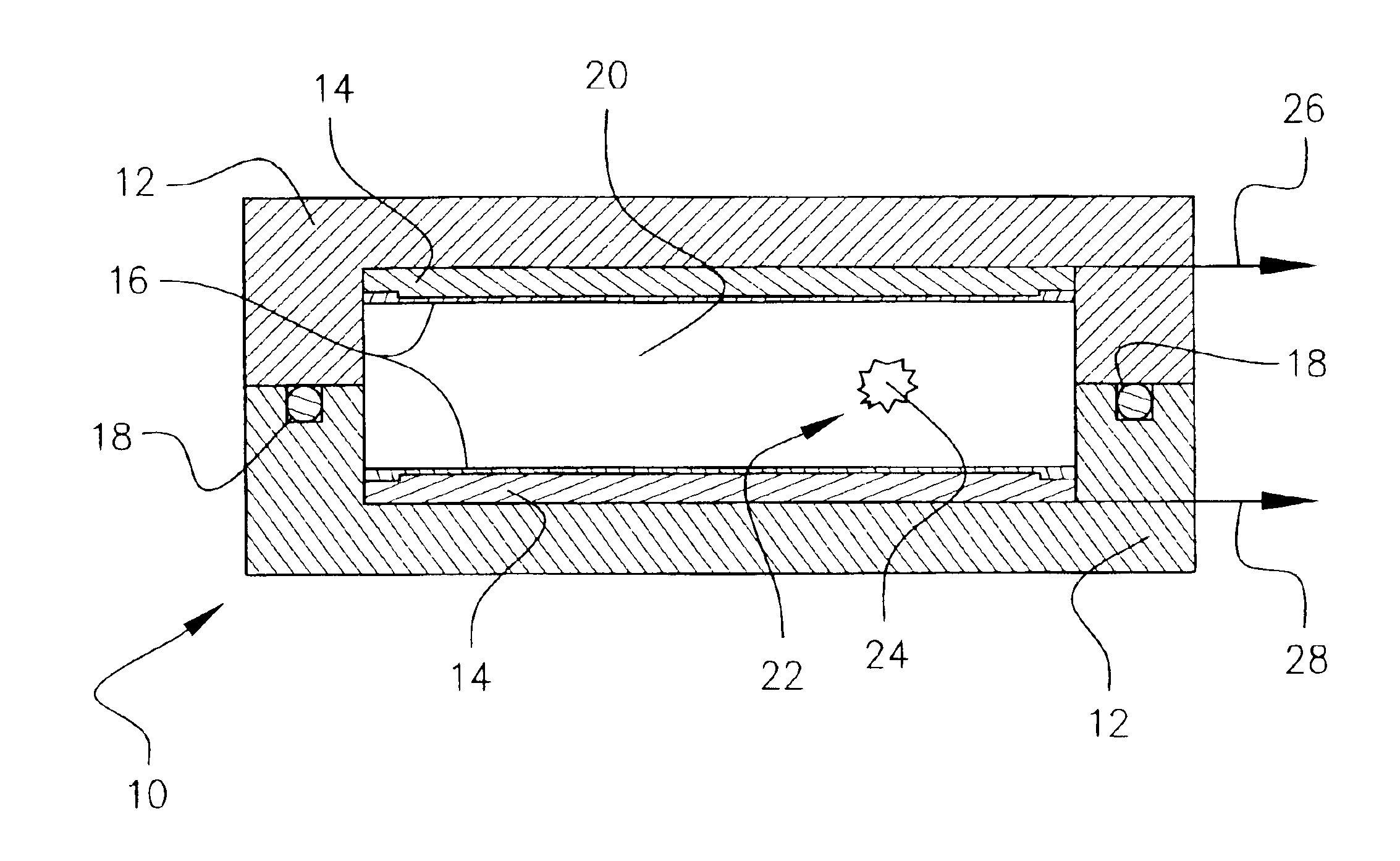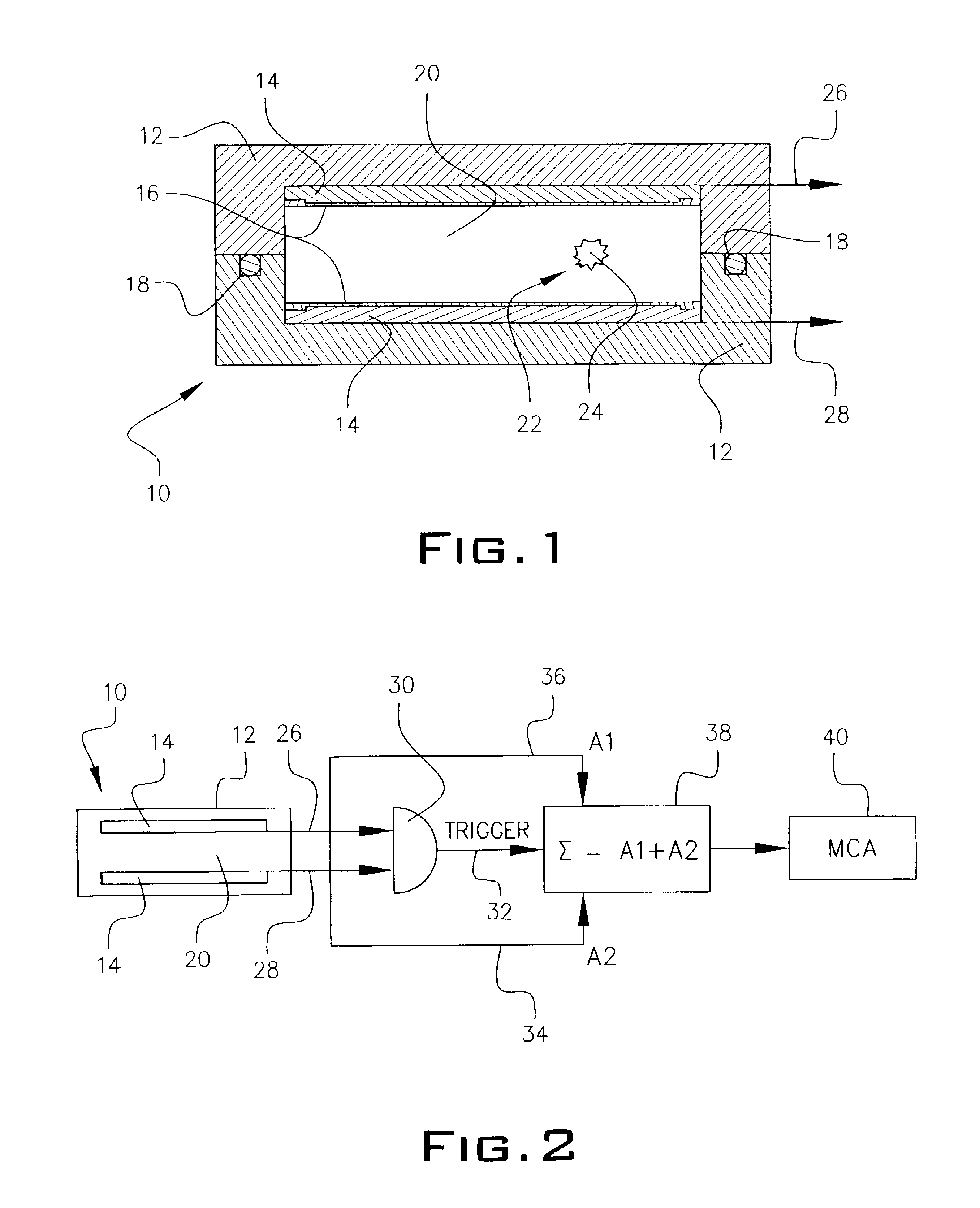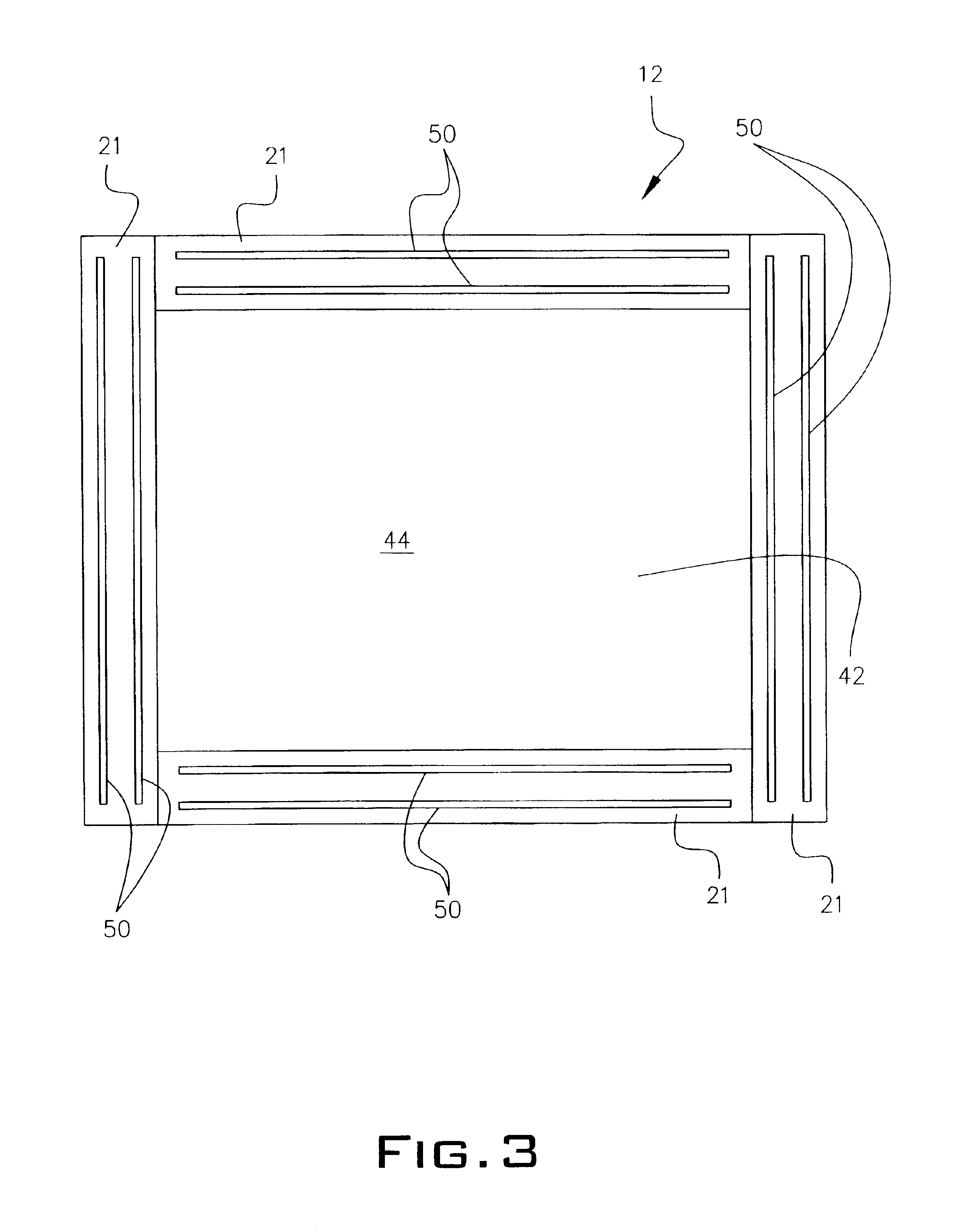Neutron detector
- Summary
- Abstract
- Description
- Claims
- Application Information
AI Technical Summary
Benefits of technology
Problems solved by technology
Method used
Image
Examples
Embodiment Construction
[0016]Throughout the following detailed description, the same reference numerals refer to the same elements in all figures.
[0017]The neutron detector 10 of FIG. 1 is a small and compact detector having a high sensitivity for use in detecting thermal neutrons. Such a device could be constructed as a pocket sized detector for use by individuals. Detector 10 improves the rejectability that is often seen in prior art devices which are unable to delineate gamma radiation from neutron radiation. In the case where a gas substance is used within detector 10 (to be discussed in further detail hereinafter) an outer pressure-tight closed container (or shell) 12 pervious to transmission therethrough of neutrons in the thermal energy region is employed. The container or shell 12 can be made from aluminum, carbon-fiberglass or other material exhibiting a low neutron absorption. Shell 12 can be a few inches long so it can be hand held or be constructed as a larger unit depending on its application...
PUM
 Login to View More
Login to View More Abstract
Description
Claims
Application Information
 Login to View More
Login to View More - R&D
- Intellectual Property
- Life Sciences
- Materials
- Tech Scout
- Unparalleled Data Quality
- Higher Quality Content
- 60% Fewer Hallucinations
Browse by: Latest US Patents, China's latest patents, Technical Efficacy Thesaurus, Application Domain, Technology Topic, Popular Technical Reports.
© 2025 PatSnap. All rights reserved.Legal|Privacy policy|Modern Slavery Act Transparency Statement|Sitemap|About US| Contact US: help@patsnap.com



